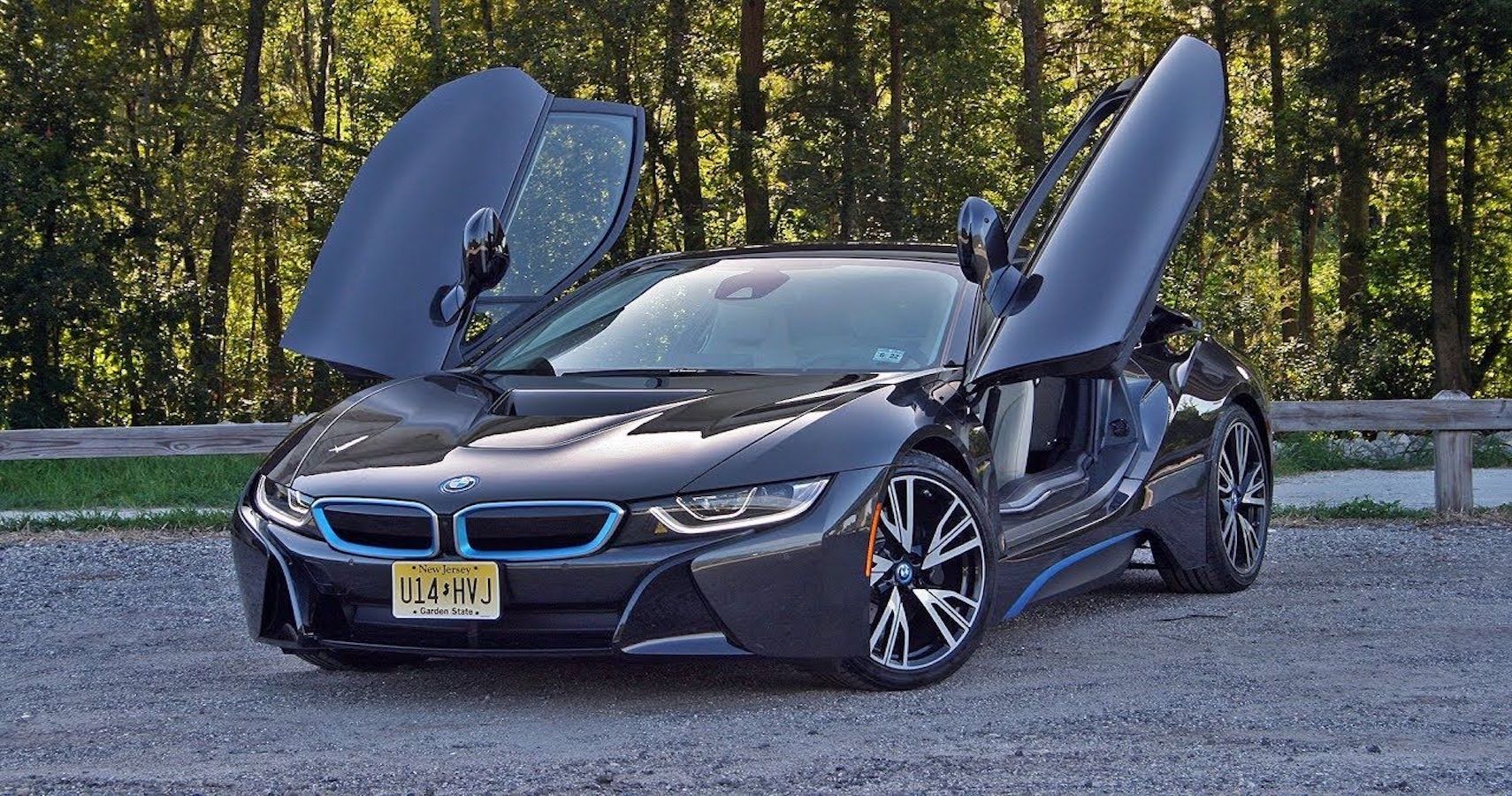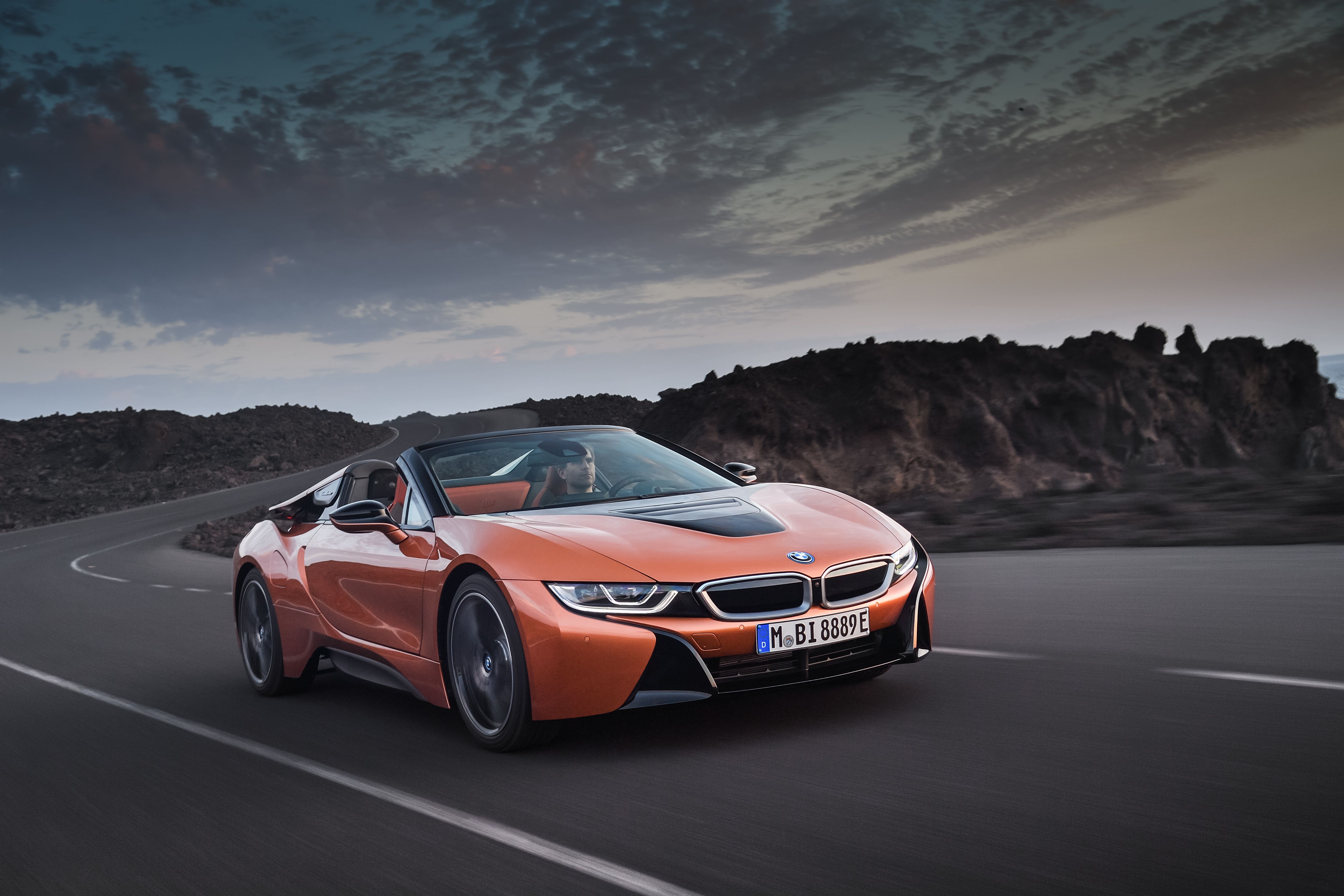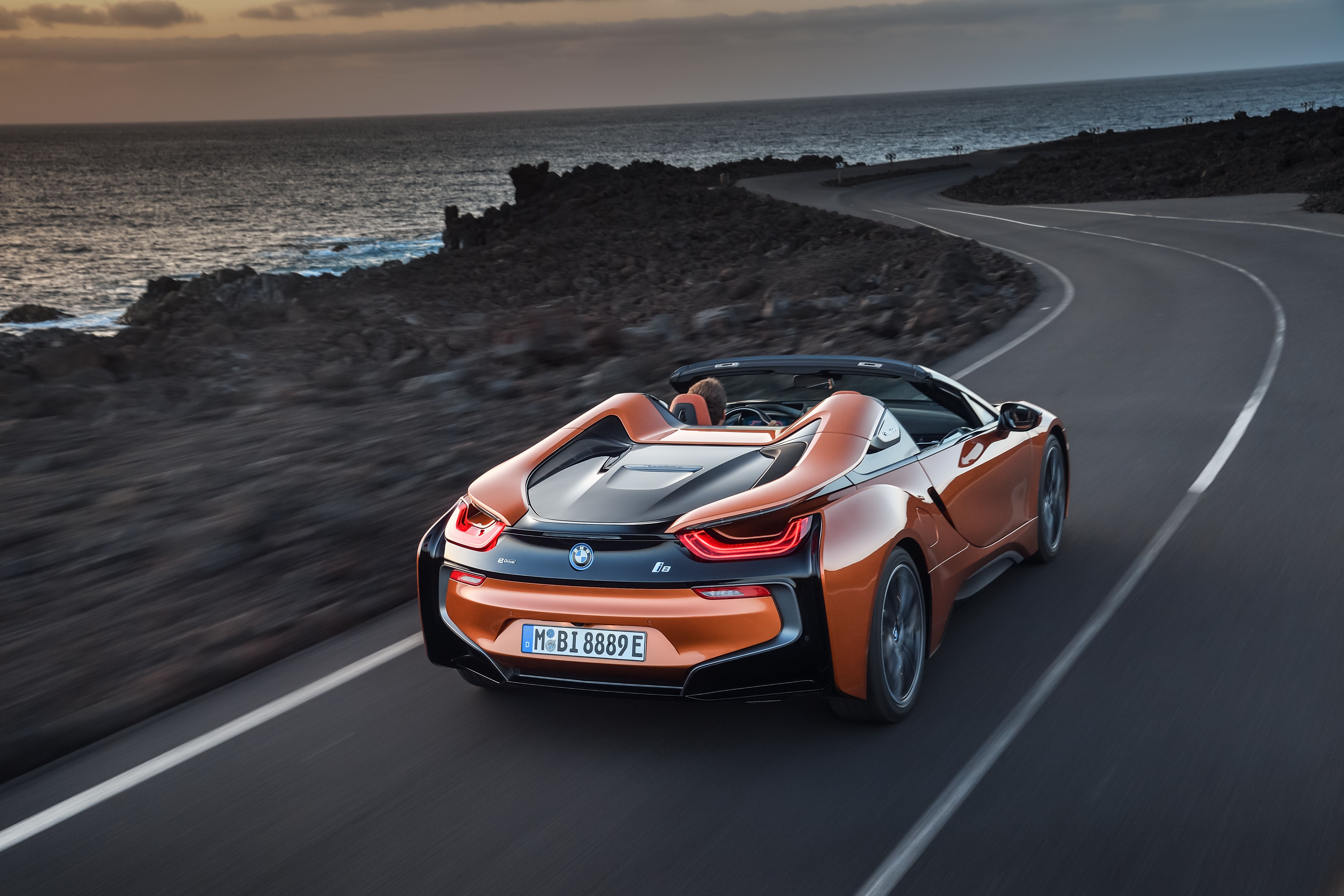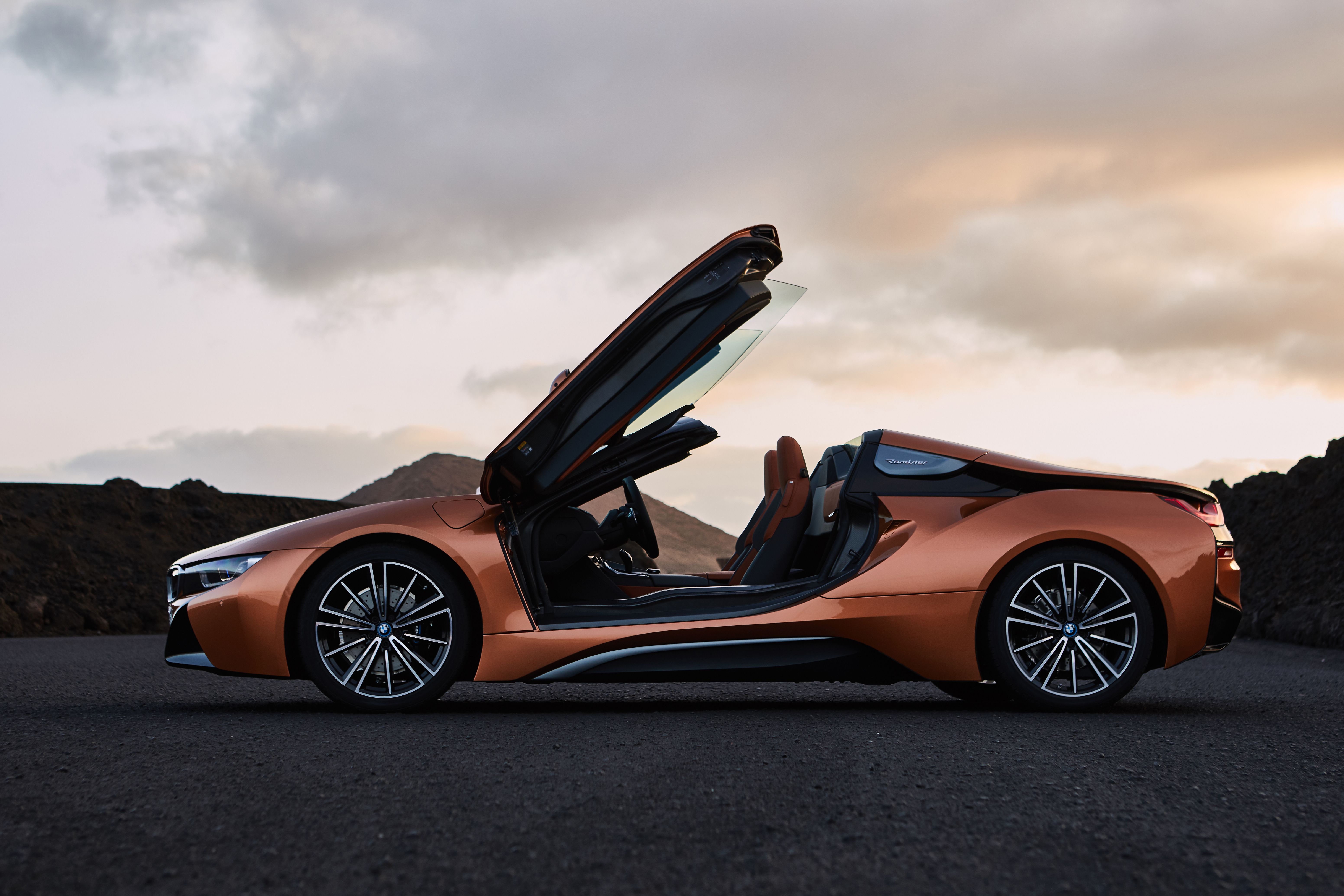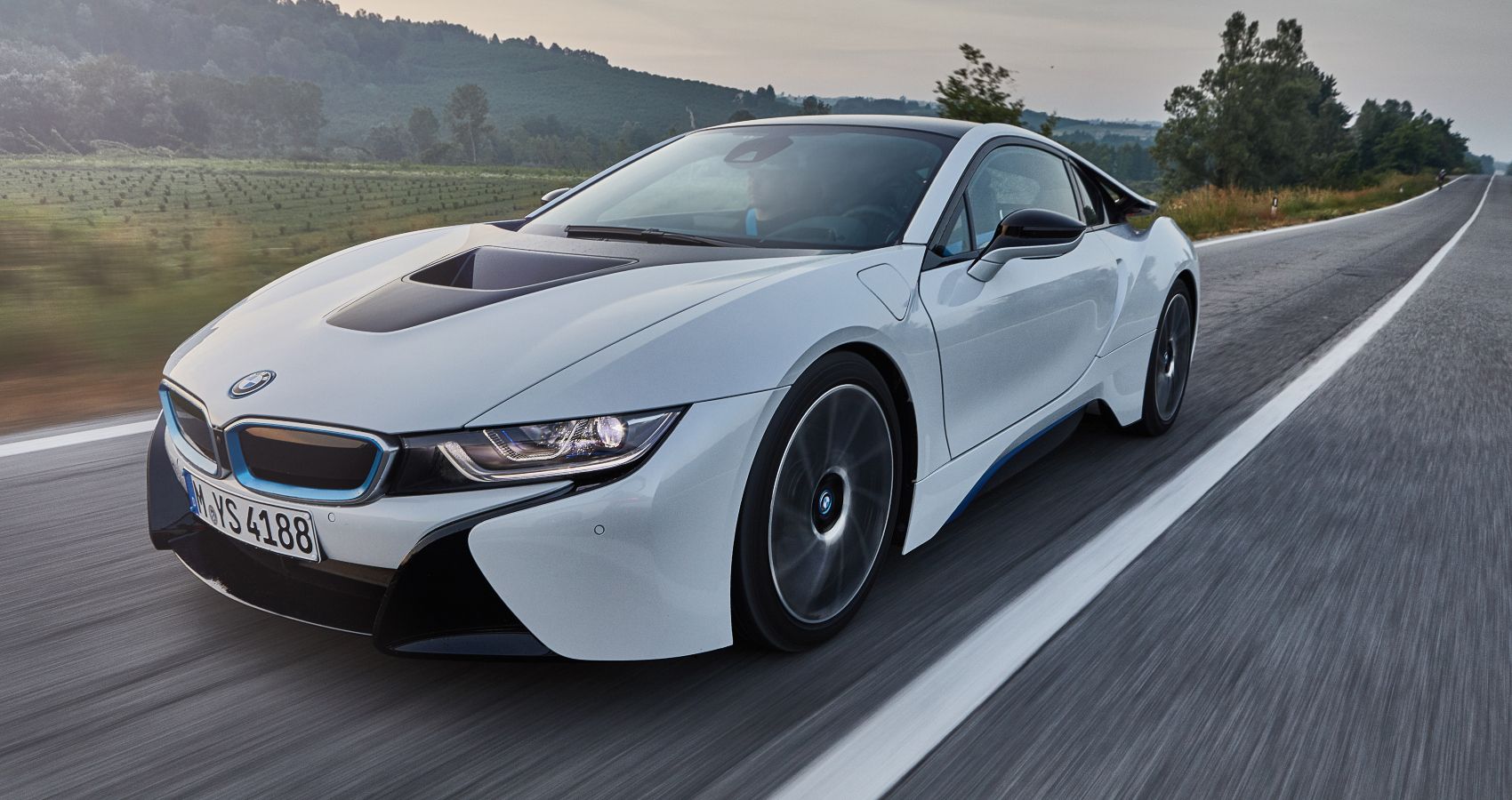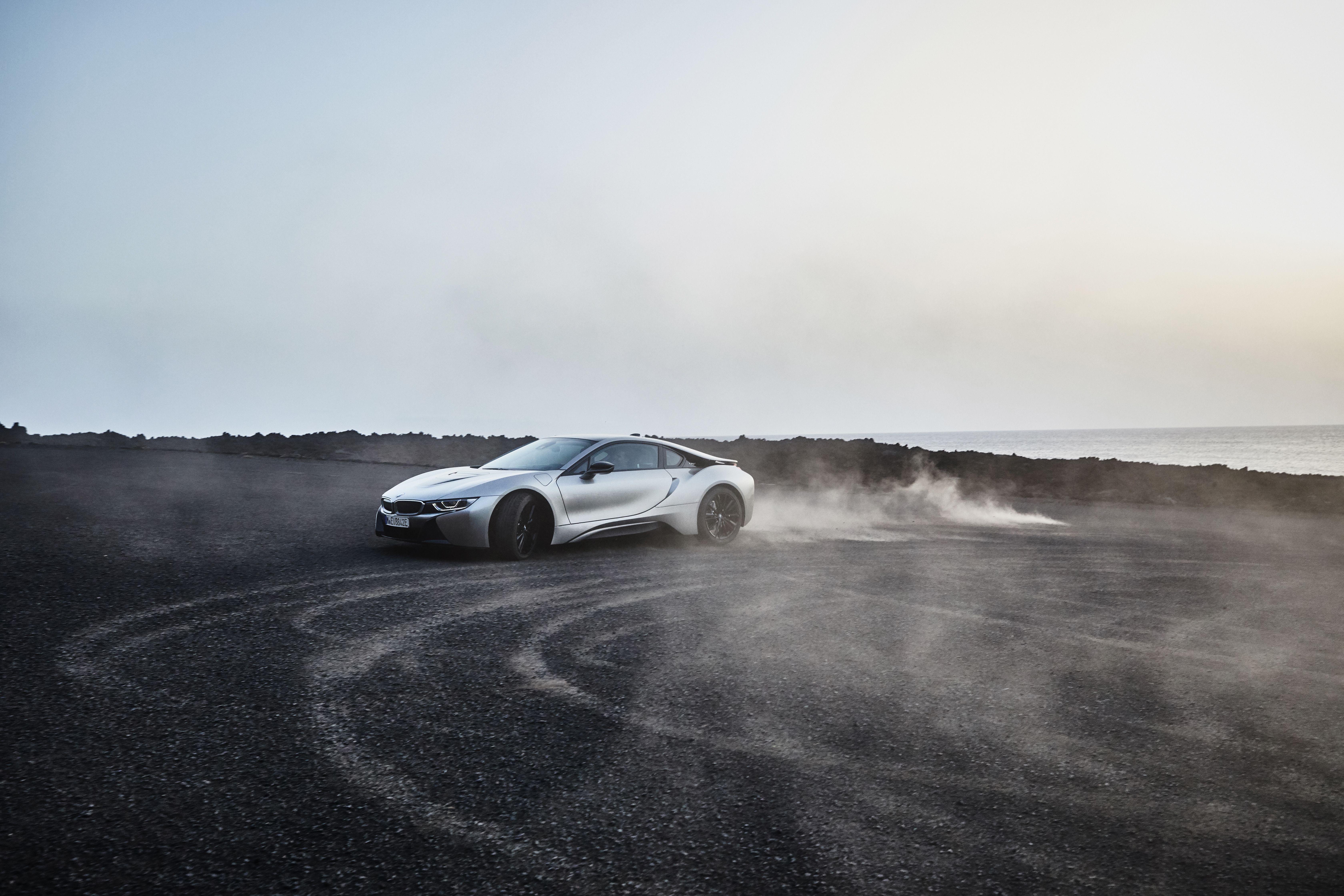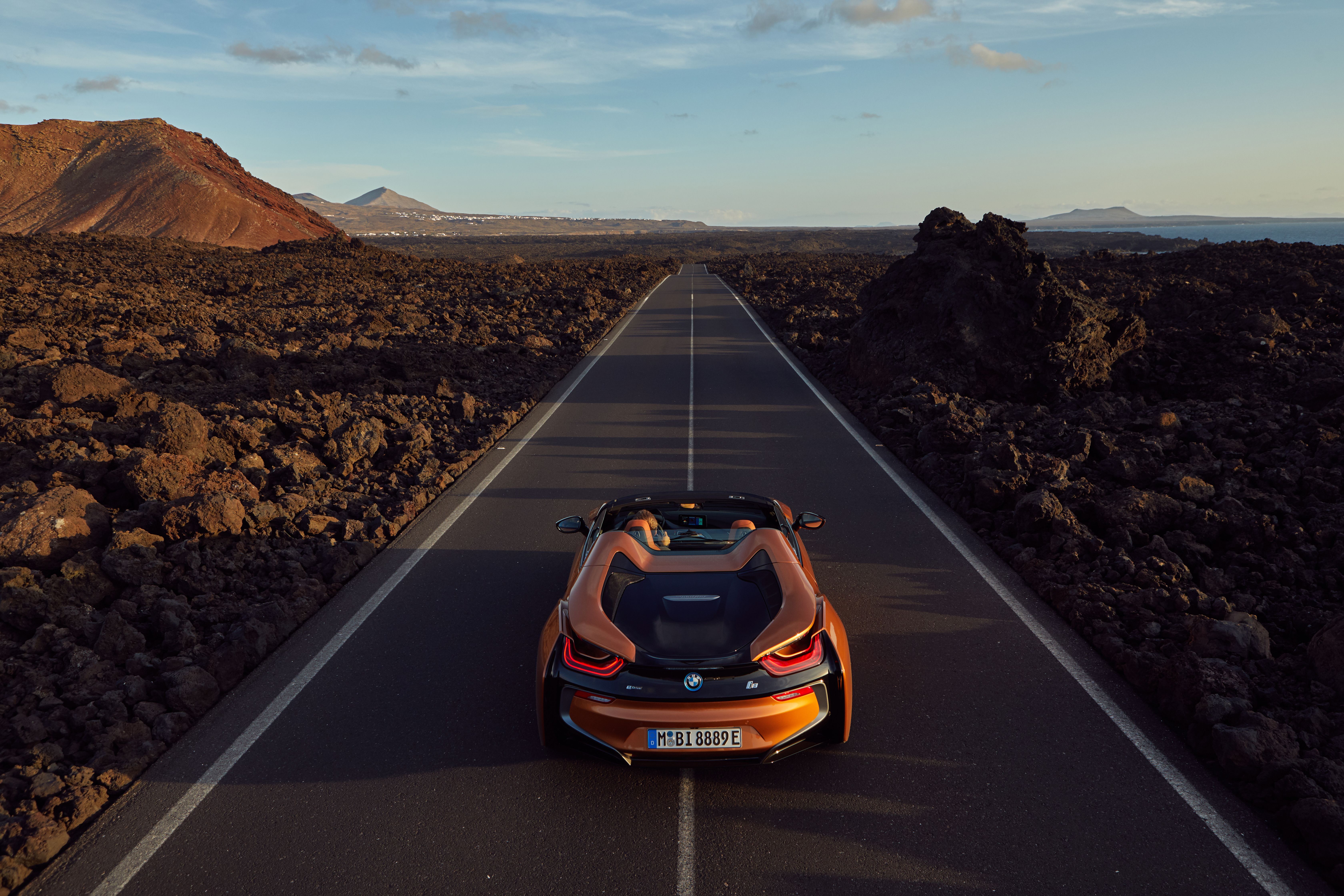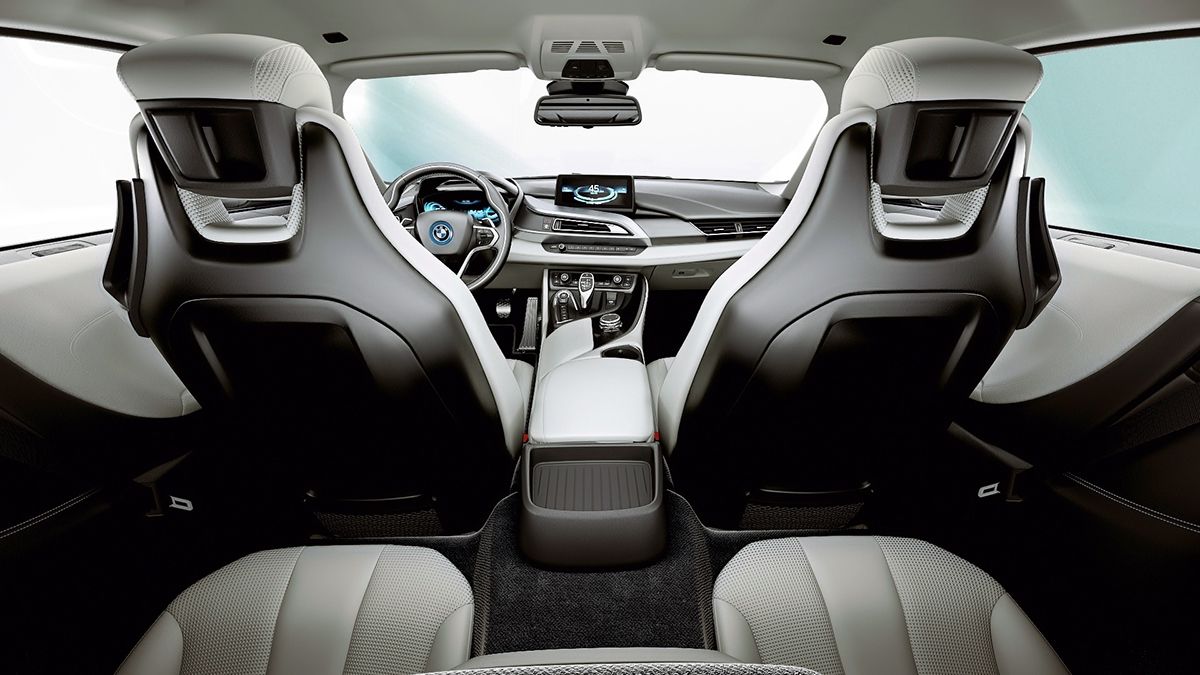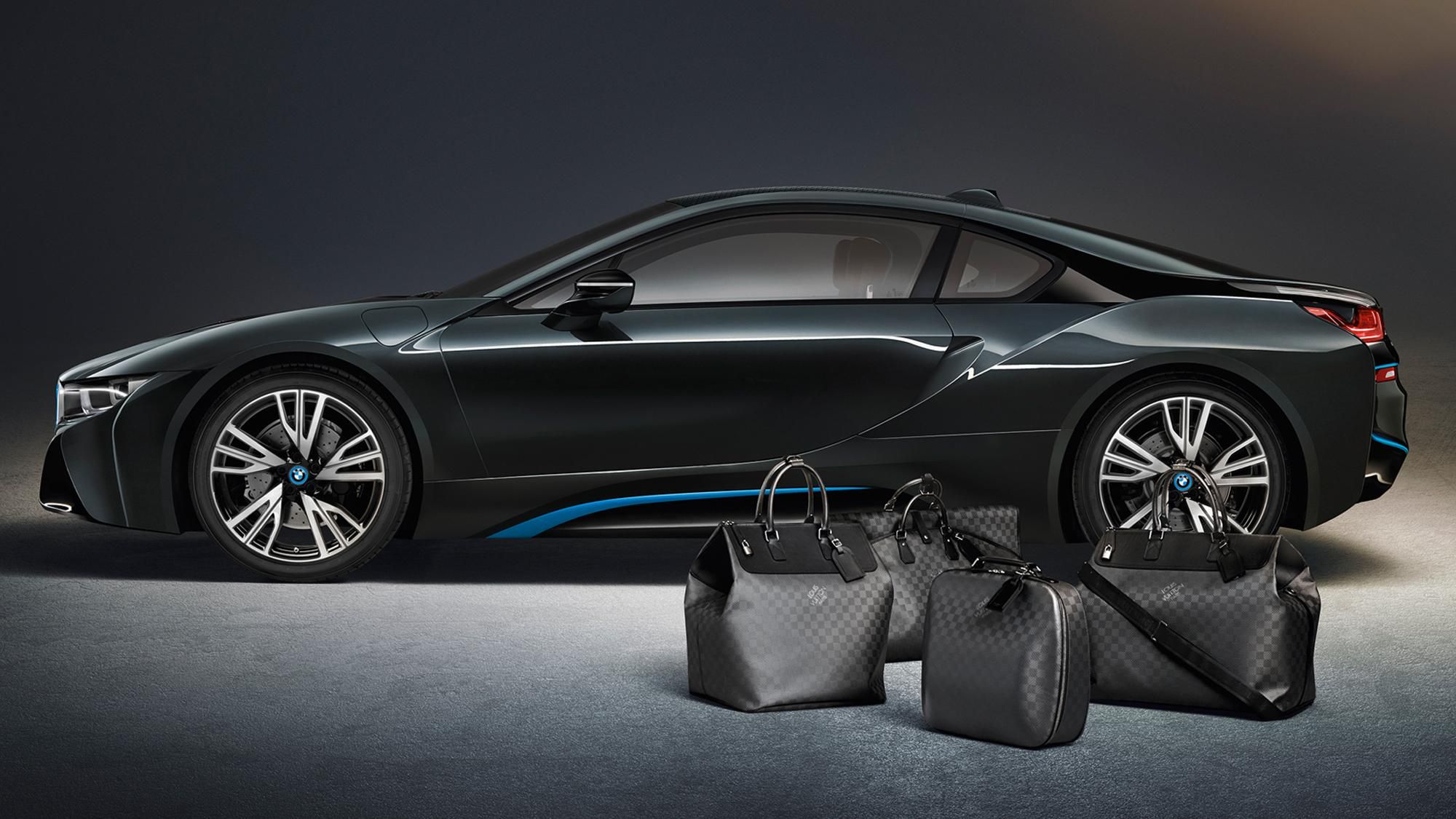Change is hard. Even when it is ultimately and obviously a net positive, it is hard to start doing things in a new way when they've been done a certain way for so long, and the automotive world is no different. But as the reality of diminishing fossil fuels sets in, we have realized that electric cars are the way of the future.
After dealing with environmentally friendly, but painfully uninspiring cars like the Toyota Prius and Nissan Leaf for years, the idea that an electric car could also go fast and look good, caught on like the first iPod. So after watching the exotic looking, but ill-fated Fisker Karma come and go in 2012, and then the advent of the Tesla Model S in 2013, BMW decided to put their engineers and designers to the test and asked them to create the ultimate plug-in hybrid luxury sports car. What they gave us was the innovative, exhilarating, and breathtaking i8.
2014-2020 BMW i8
- Dihedral Scissor Doors
- Head-Turning Design
- Regenerative Brakes
- Model: Coupe, Roadster
- Engine/Motor: Turbocharged 1.5-Liter Inline-3 + 2 AC Motors (Front & Mid)
- Horsepower: 357-369 Horsepower
- Torque: 420 Pound-Feet Total Output
- Drivetrain: Front, Rear, Or All-Wheel Drive
- Transmission: 2-Speed Auto (Front), 6-Speed Auto (Mid)
- Range: 370 Miles
- Low Center Of Gravity
- Extensive Use Of Carbon Fiber
- Always Draws A Crowd
- High MSRP For Performance
- Could Use More Power
- Always Draws A Crowd
The BMW i8: Scissor Doors, Carbon Fiber, And Hybrid Power
From the outside, the i8 looks like something Hollywood dreamed up to star in the next Back To The Future reboot. Either that, or the BMW version of a low-slung, grounded spacecraft. Even when the idea that what your eyes are seeing is, in fact, an automobile, the more you learn about the i8, the more it begins to make your mind spin again. Whether it is the impossibly exhilarating dihedral scissor doors, or the copious amounts of carbon fiber both inside and out, or even the complex hybrid powertrain, the i8 continues to be something of an automotive enigma. But much like any challenging puzzle or game, once you begin to understand it better, the more it endears itself to you.
Power for the i8 comes from a combination of sources. Start the i8 up and the front-mounted 129-horsepower electric motor goes to work first (borrowed from BMW's own i3), powering the front wheels to make 141 horsepower and 184 pound-feet of torque. That electric motor could work solo up until 75 MPH, or until you asked the i8 for maximum power at any point during your drive. Then that's when the mid-mounted 1.5-liter DOHC turbocharged and intercooled inline-3 cylinder engine (borrowed from the Mini lineup) kicked in, and combined with another electric mid-motor to create another 228-horsepower and 226 pound-feet of torque.
The BMW i8 Had A Total Power Output Of 369 Horsepower
.jpg)
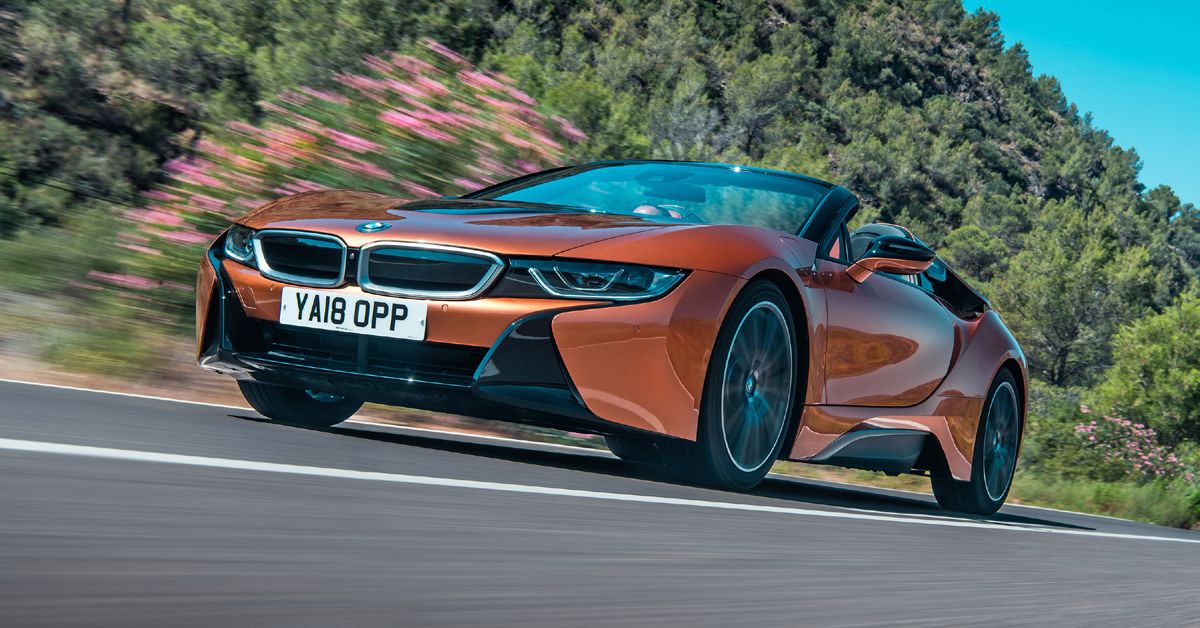
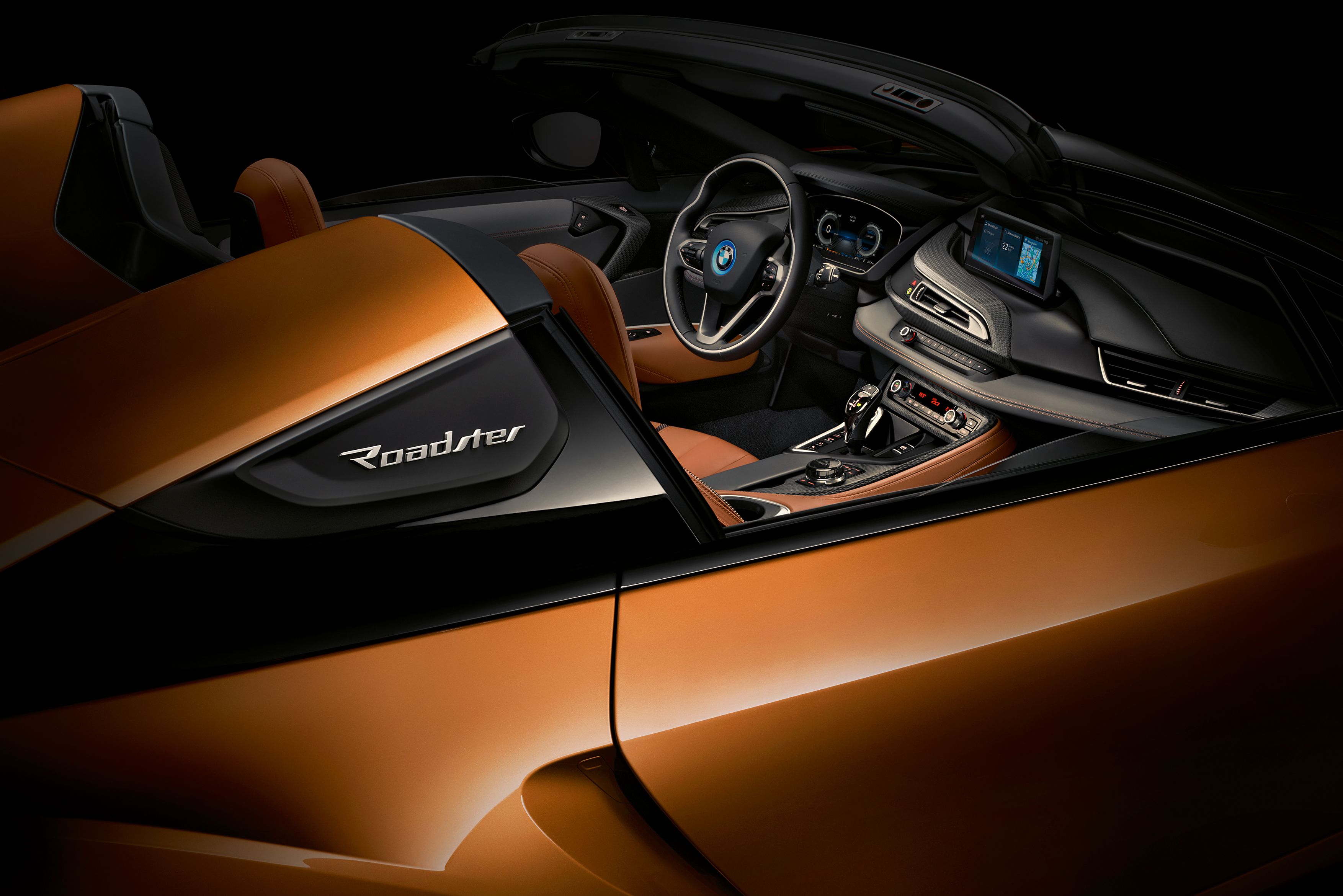
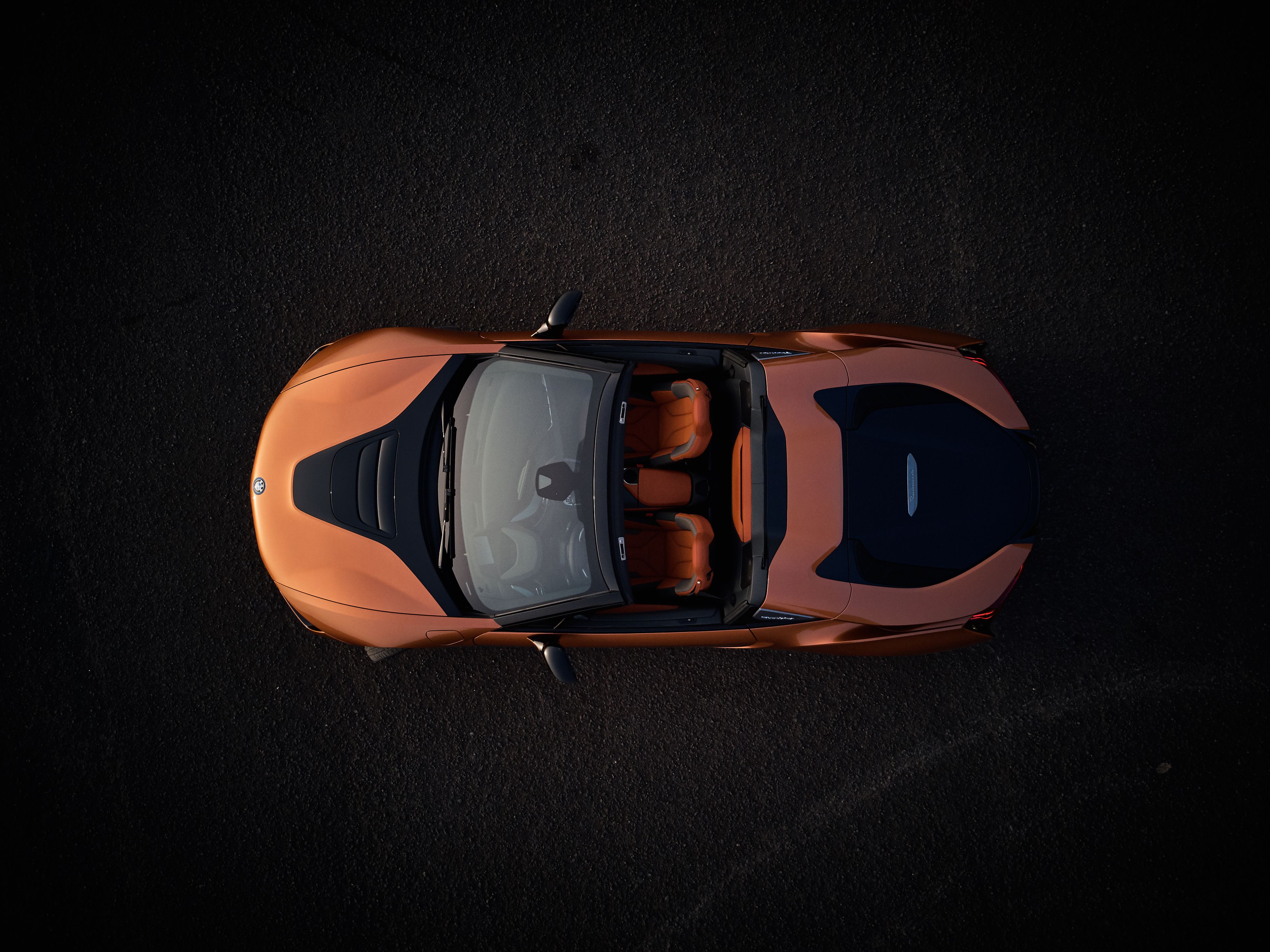
The electric motors utilized a 7.1-kWh battery in the 2014-2017 model years, while a more powerful 11.6-kWh battery pack appeared as technology advanced in the i8's last two years. Total output for the 7.1-kWh battery cars came in at 357 horsepower and 420 pound-feet of torque, while the bigger battery cars made a total of 369 horsepower and the same 420 pound-feet of torque.
Power for the front electric motor passed through a 2-speed automatic transmission, while the mid-mounted gas and electric motors' power funneled through a 6-speed automatic transmission that has a manual-shifting mode. From there, the i8 employs an intelligent all-wheel drive system that continuously adjusts and distributes torque to the wheels with the most traction.
The i8 Could Be Front-Wheel, Rear-Wheel, or All-Wheel Drive
The i8 has three distinct driving modes that each have its own character. Comfort mode allows you to drive in completely electric mode until the battery is almost exhausted, at which point it will enlist the help of the gas engine. ECO Pro adjusts each drive system and shift points to allow the i8 to be as efficient as possible. Sport mode allows the i8 to maximize all available power and torque on tap, while the steering and suspension both tighten up significantly and become extremely responsive. Sport also allows the brakes and throttle to regenerate battery power as needed. Depending on which mode you are in, the i8 can switch between front-wheel (electric only), rear-wheel (gas only), and all-wheel drive (combined), giving it one more reason to stand out as unique.
The BMW i8 Could Do 0-60 MPH In 4.4 Seconds
While many cynics will (correctly) point out that the i8 was no match for other exotic-looking hybrid cars like the second-generation Acura NSX, LaFerrari, or Porsche 918, BMW did not set its sights on making the fastest plug-in the world has ever seen. That said, when not compared to ultra-rare hypercars, the i8 was plenty fast. With nearly 400 horsepower, and a curb weight of just 3,484 pounds (add about 137 pounds if you want the roadster), the power-to-weight ratio backs that statement up easily. The i8 was capable of running from 0-60 MPH in 4.4 seconds, and on to an electronically-limited top speed of 155 MPH that was easily attainable thanks to its very low drag-coefficient (Cd) of just 0.26 for the coupe and 0.28 for the roadster.
As with most hybrids, sometimes the most impressive performance these cars can put up is at the pump. The i8 however, is not one of those cars. This is not to say its fuel economy is bad, more so that its performance is its leading source of entertainment. The relatively fuel-frugal Bimmer manages to post 27 MPG combined city/highway and a very respectable gas plus electric combination of 69 MPGe. Of course, as with all sports cars, the nature of your driving style can severely impact fuel consumption.
The i8 Had Perfect 50/50 Weight Distribution
Once you figure out the arch of the doors, a large sill greets you, and takes some time to adjust to. The seats push in towards the center of the car, not nearly as dramatically as the McLaren F1, but enough to help keep the i8's center of gravity extremely low, and its weight bias at a perfect 50/50%. And while no one will ever accuse the i8 of being practical, the interior is nicely adorned with plush leather and supportive sports seats. The infotainment center has navigation and utilizes BMW's iDrive system, while the expansive center console feels a little wide, but that real estate does allow for plenty of storage for all sorts of little items.
Though if you are looking to pack more than a bag or two, the i8 might be a little challenging as the rear trunk has a shallow deck (one of the perils of a mid-engine layout), and then a deep compartment that ends up being literally five cubic feet of cargo storage. If you opt for the coupe, however, you can utilize the vestigial back seats for luggage as needed. When new, BMW did offer a carbon fiber Louis Vuitton luggage set specially made to fit into the i8's, especially unique trunk, but that also would have tacked on a lofty $20,000 to the bottom line. At that rate, your money is better spent going for the Roadster and buying clothes when you get there.
The Base Price For An i8 Was $148,495
Though the i8 is now officially out of production, when new their MSRP was nothing resembling cheap. The base price for the coupe in its final year of production was $148,495 while the more exotic-looking roadster would have set you back a cool $164,295. Although the expectation is that the i8 will be a collector's item in the not-too-distant future, many used examples can be had for under $75,000 with relatively low mileage.
Change is hard, even when it is a good thing. The BMW i8 represented not only the transitional change from gas to electric, but also the change in mindset of what a hybrid electric car can be, and by doing so, became the best-selling plug-in hybrid sports car to date. Just because you have a green car doesn't mean you need to see red when it comes to trying to pass someone on the highway. And though it was not perfect, BMW made a futuristic car that we loved, and the i8 will undoubtedly go down in history as one of the most original, eye-catching and unique hybrid cars the world has ever seen.

